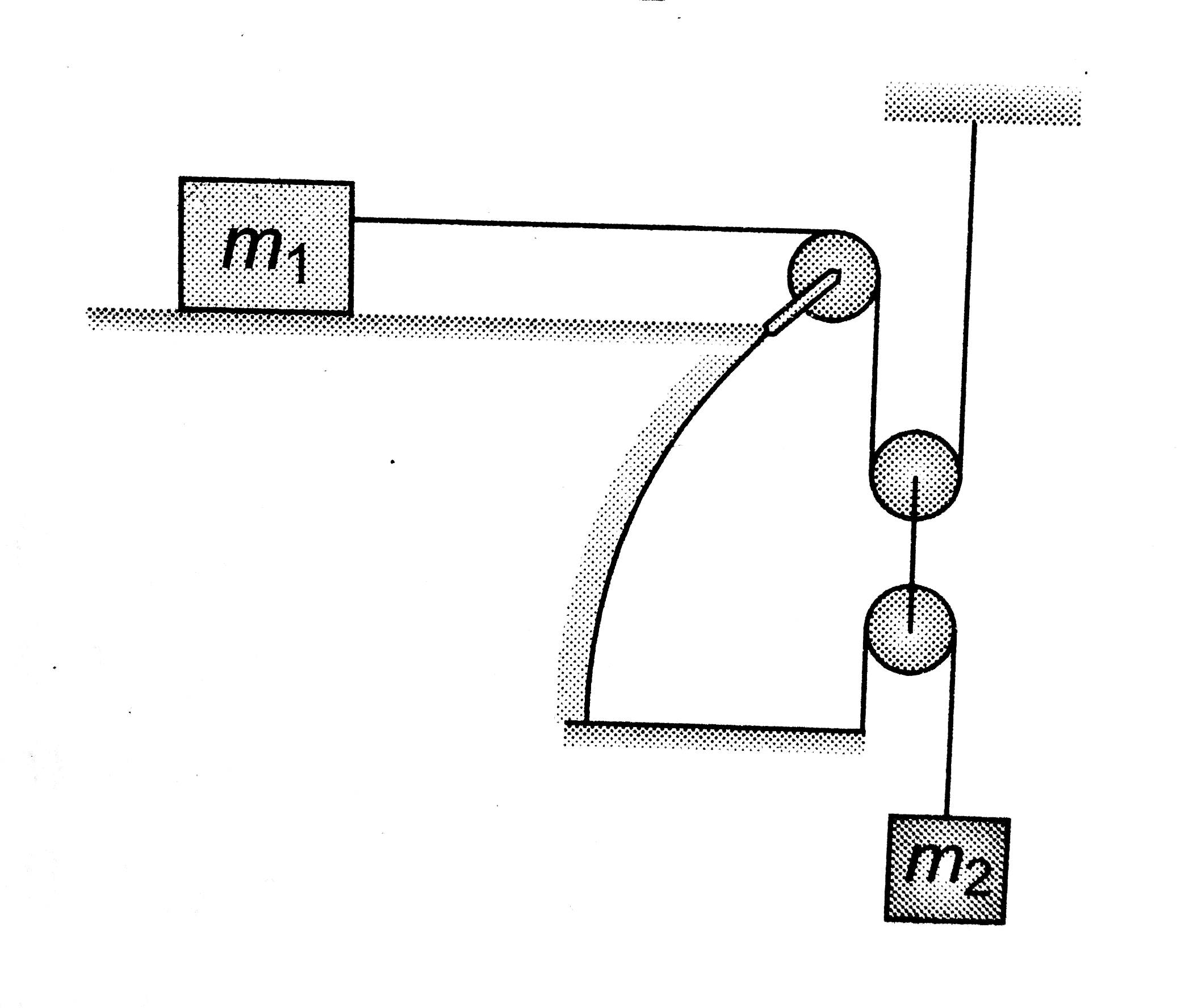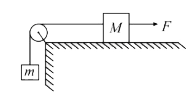A cord is wrapped on a pulley (disk) of mass M and radius R as shown in figure. To one end of the cord, a block of mass M is connected as shown and to other end in (a) a force of 2 Mg and in (b) a block of mass 2 M. Let angular acceleration of the disk in A and B is αAandαβ respectively, then (cord is not slipping on the pulley)

αA=αB
αA>αB
αA<αB
None of these
The correct Answer is:B
In (A)
(T2−T1R)=MR22αA, T1−Mg=MaA, T2=2Mg
aA=RαA

Solve to get αA=2g3R
For (a)
(T2−T1)×R=MR22αB

(T2−T1)×R=MR22αB
T1−Mg=Mas
2Mg−T2=2Mas
aB=RαB
Solve to get αB=2g7R, So, αA>αB.
Similar Questions
A cord is wrapped on a pulley (disk) of mass M and radius R as shown in figure. To one end of the cord, a block of mass M is connected as shown and to other end in (a) a force of 2 Mg and in (b) a block of mass 2 M. Let angular acceleration of the disk in (a) and (b) is αAandαB respectively, then (cord is not slipping on the pulley)

View SolutionA block of mass m is released from a wedge of mass m as shown in figure . Find the time taken by the block to reach the end of the wedge.

View Solution
Knowledge Check

Two blocks of masses m1 and m2 are connected as shown in the figure. The acceleration of the block m2 is :Am2gm1+m2Bm1gm1+m2C4m2g−m1gm1+m2Dm2gm1+4m2Two block of masses m1 and m2 are connected as shown in the figure. The acceleration of the block m2 is:
 Am2gm1+m2Bm1gm1+m2C4m2g−m1gm1+m2Dm2gm1+4m2
Am2gm1+m2Bm1gm1+m2C4m2g−m1gm1+m2Dm2gm1+4m2In the figure shown, all surfaces are smooth and the pulley is massless. A constant force of magnitude F=mg2 is acting on the block of mass M. The acceleration of the block M is :
 Amg2(m+M) towards rightBmg2(m−M) towards rightsCmg2(m−M) towards leftDmg2(m+m) toward left
Amg2(m+M) towards rightBmg2(m−M) towards rightsCmg2(m−M) towards leftDmg2(m+m) toward left
Figure shows a uniform disk, with mass M = 2.5 kg and radius R = 20 cm, mounted on a fixed horizontal axle. A block with mass m = 1.2 kg hangs from a massless cord that is wrapped around the rim of the disk. Find the acceleration of the falling block, the angular acceleration of the disk, and the tension in the cord. The cord does not slip, and there is no friction at the axle.
View SolutionIn the figure, the blocks have masses M1andM2(M1>M2) and acceleration a. The pulley P has a radius r and some mass the string not slip on the pulley

View SolutionA uniform disc of mass M and radius R is mounted on an axle supported in frictionless bearings. A light cord is wrapped around the rim of the disc and a steady downward pull T is exerted on the cord. The angular acceleration of the disc is
View SolutionA block of mass m1 rests on a horizontal table. A string tied to the block is passed on a frictionless pulley fixed at the end of the table and to the other end of string is hung another block of mass m2. The acceleration of the system is
View SolutionAn ideal inextensible string is wrapped over the disc of mass m and radius R. The other end of the string is connected to mass m. the string is passing over an ideal pulley A as shown in the figure. At any time t, mass m and disc are moving downward with acceleration of magnitude a1 and a2 respectively. The disc is rotating clockwise with angular acceleration of magnitude α . There is no slipping betweeb string and disc. choose the incorrect option

View Solution